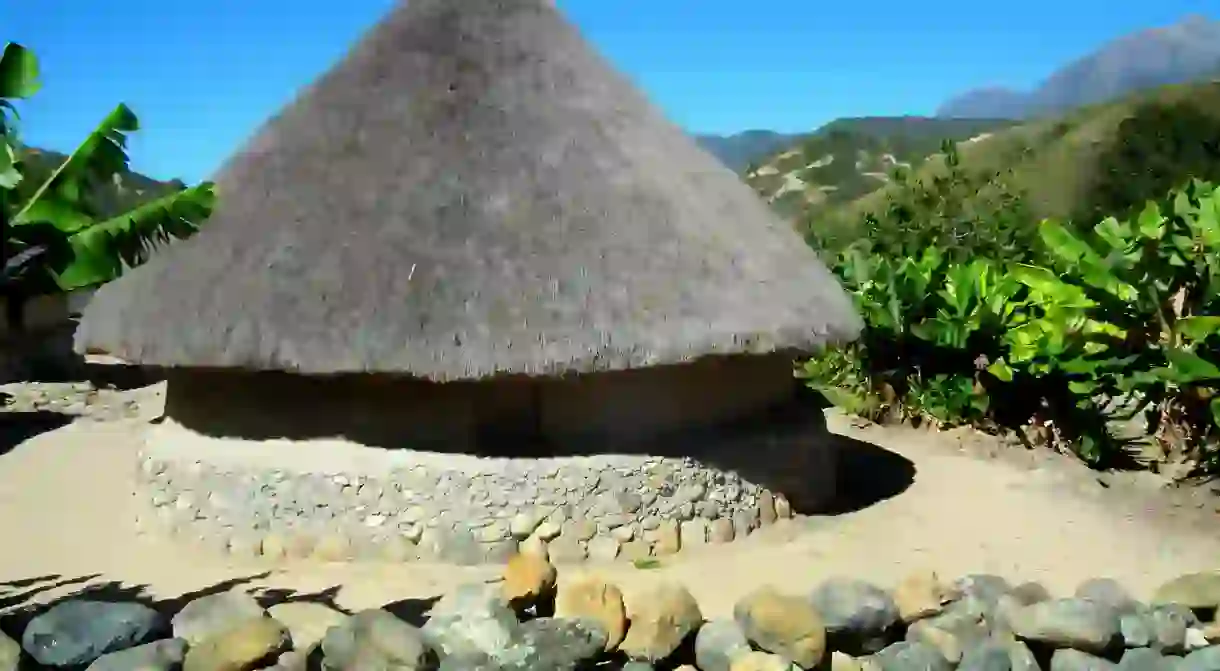7 Indigenous Cultures You Can Actually Visit in Colombia

Although less than 4% of Colombia’s population is made up of indigenous people – split into roughly 87 distinct indigenous groups – this is a rich and varied set of cultures with a long and diverse history. There are several different indigenous groups in Colombia that have opened their cultures up to tourists to a certain extent, and visiting these people and learning about their lives is a fascinating and unique experience. However, please be aware that these are people, so be respectful of their cultures and privacy, and always try to organize a visit with a local, community-based project, rather than simply turning up with a camera!
Wiwa
The Wiwa are one of the four indigenous peoples who live in the Sierra Nevada de Santa Marta mountain range, along with the Kogui, Arhuaco, and Kankuamo. The Wiwa are more active in tourism than many of their other local counterparts, and even run an agency offering treks to the Lost City, one of their most sacred sites. Wiwa Tour offers a unique perspective on any trip to the Lost City, and all the guides are local Wiwa people, who can give you far more information about the site than any outside guide could. Make sure you choose them if you’re planning a visit to the city.
[jwplayer M5cy8l04-RnIdcM25]
Wayuu
Colombia’s largest indigenous group are the Guajira Desert-dwelling Wayuu people. Over 150,000 Wayuu live in the harsh northern deserts on the Venezuelan border, and they have suffered terribly as a people from the droughts that have ravaged the region, combined with decades of state neglect. Many Wayuu can, understandably, be wary of outsiders, but you can learn more about their truly unique culture on a visit to a rancheria, a typical Wayuu home, many of which have become tourist hotels. The best of the lot is Rancheria Utta, where you can learn about traditional dance, dress, and the culture of making the iconic Wayuu bags.

Arhuaco
Another of the peoples of the Sierra Nevada de Santa Marta, the Arhuaco are generally more isolated from the outside world than the Wiwa, but it is possible to visit their spiritual capital of Nabusimake, tucked away in the southern Sierra, not too far from the regional capital of Cesar, Valledupar. Nabusimake is a gorgeous little village, hidden away in a peaceful valley in the mountains. Visitors can still be a source of contention there, however, so go with a reputable agency, and try to be respectful when it comes to photos and the like.

Guambiano
The Guambiano – or Misak – are an indigenous people who live in the southern department of Cauca, mostly around the small mountain village of Silvia. This village is the site of a weekly market – always on a Tuesday – when Guambiano people from the surrounding mountains come down to the village to buy and sell goods. You can visit Silvia on a Tuesday and learn more about Misak culture; however, be aware that they are especially not fond of having their photo taken, so always ask politely if you plan to do so.

Páez
Also known as the Nasa, the Páez people live in the southwestern highlands of Colombia, many of them around the ancient archaeological site of Tierradentro. Although there are no formal means of visiting the Páez culture, many Páez people work as guides around the tombs and catacombs of Tierradentro, and during a tour, you can gain a fascinating insight into their cultures and traditions.
Puinave
The Puinave are an indigenous people from the eastern Amazonian region of Guainia. Although their culture remains somewhat isolated, the location of the Puinave village of El Remanso alongside the ancient rocky Mavecure Hills in the Guainia jungles has put them in greater contact with tourism. They also have no formal tourism infrastructure, but local Puinave people act as guides on hikes up the ancient rocks, and are happy to discuss their culture, and tell stories of their myths and legends and how they are connected to the hills.

Embera Chamí
The Embera Chami people are spread around the western lowlands of Colombia, especially in the regions of Choco, Risaralda, and Caldas. The reservation of San Lorenzo is located in Caldas region, near the town of Riosucio, and is a great place to visit if you wish to learn firsthand about their remarkable culture. San Lorenzo is opening up as a community tourism project, and it is possible to arrange a visit with local guides which includes a hike, typical food, a healing ceremony with an Embera priest, and even live music.













